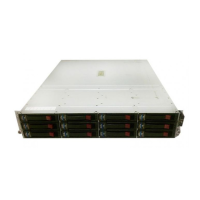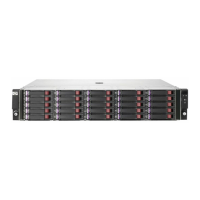To ensure that journals can hold the amount of data that could accumulate, they must be sized
according to the following:
• The maximum amount of time that journals could accumulate data. You develop this information
by determining your operation’s recovery point objective (RPO).
• The amount of changed data that your application generates. This is done by measuring
write-workload.
Determining your RPO
Your operation’s recovery point is the maximum time that can pass after a failure or disaster occurs
before data loss is greater than the operation can survive.
For example, if the operation can survive one hour’s worth of lost data, and a disaster occurs at
10:00 am, then the system must be corrected by 11 a.m.
In regards to journal sizing, the journal must have the capacity to hold the data that could
accumulated in one hour. If RPO is 4 hours, then the journal must be sized to hold 4-hours' worth
of accumulating data.
To assess RPO, the host application’s write-workload must be known.
With write-workload and IOPS, you or your organization’s decision-makers can analyze the number
of transactions write-workload represents, determine the number of transactions the operation could
loose and still remain viable, determine the amount of time required to recover lost data from log
files or key it in, and so on. The result is your RPO.
Write-workload
Write-workload is the amount of data that changes in your production system in MB per second.
As you will see, write-workload varies. according to the time of day, week, month, quarter. That
is why workload is measured over an extended period.
With the measurement data, you can calculate workload averages, locate peak workload, and
calculate peak rolling averages, which show an elevated average. With one of these base data
you will calculate the amount of data that accumulates over your RPO time, for example, 2 hours.
This will be a base capacity for your journal volumes or represent a base amount of bandwidth
your system requires.
Whether you select average, rolling average, or peak workload is based on the amount of
bandwidth you will provide the data path (which is also determined by write-workload). Bandwidth
and journal volume capacity work together and depend on your strategy for protecting data.
Measuring write-workload
Workload data is collected using Performance Monitor or your operating system’s
performance-monitoring feature. The number of read/write transactions, or input/output per second
(IOPS), is also collected by the software. You will use IOPS to set up a proper data transfer speed,
which you insure through RAID group configuration and by establishing the number of Fibre Channel
ports your Continuous Access Journal system requires. Each RAID group has a maximum transaction
throughput; the ports and their microprocessors have an IOPS threshold.
Workload and IOPS collection is best performed during the busiest time of month, quarter, and
year. This helps you to collect data that shows your system’s actual workloads during high peaks
and spikes, when more data is changing, and when the demands on the system are greatest.
Collecting data over these periods insures that the Continuous Access Journal design you develop
will support your system in all workload levels.
Write-workload 21

